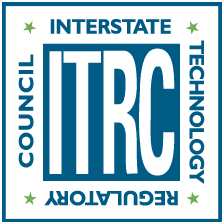- Research is needed to develop statistical approaches and models that allow for cost-effective estimation of mass flux and mass discharge in contaminated aquifers and a delineation of the associated uncertainty.
- Additional methods should be developed to improve the reliability of various mass flux and mass discharge measurement techniques.
- Additional studies comparing new mass measurement methodologies with the transect method should be conducted.
- comprehensive comparison of key methods and method categories to each other (point vs. point, boring vs. boring, transect vs. transect, and mixed comparisons [e.g., three- dimensional distributions based on points/borings vs. three-dimensional distributions based on transects])
- New method-specific “application” guidance documents should be prepared as new methods and technologies to measure mass flux and mass discharge have been validated.
- Refine the methodologies used to convert discharge estimates obtained using a transect to predicted concentration ranges at a receptor. This is a key to refining the exposure rate at the receptor as compared to the following:
- exposure rates dependent upon only concentration-based estimates
- regulatory standards (e.g., drinking water MCLs)
This could serve to bridge the current gap between engineering performance metrics based on reduction of mass and regulatory performance metrics based on a linkage to anticipated reduction in concentration at a receptor.
- More work should be performed evaluating the use of mass flux and discharge estimates over time to determine the age of the release and the total mass of the release.
- Development of plume classification systems that rely on the mass flux/mass discharge concepts (Newell et al. 2011 is an example of such a system).
- Determine the accuracy and reliability of mass flux/mass discharge measurements made with rapid screening tools (such as the MIP and advanced piezocone).
- Studies to determine whether long-screen wells (screen intervals of 5 feet or more) are accurately averaging the mass flux information into a single concentration measurement and to determine the overall accuracy and applicability of mass flux/mass discharge measurements from transects using long-screened wells.
- Develop focused methods to accurately measure mass discharge from specific sources, such as diffuse, low-strength sources associated with low-permeability compartments that have been charged with contaminants via matrix diffusion.
Click Here to download the entire document.


